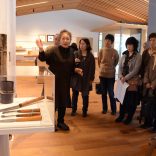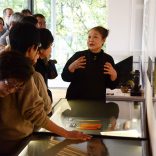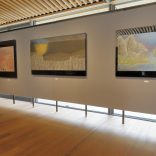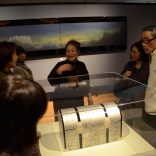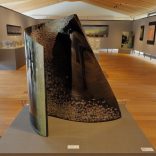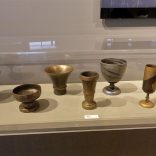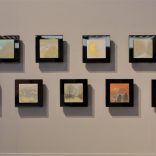| Date and time: January 27 (Fri) and Sunday, February 12 13:30 to 14:10 Venue Takenaka Carpentry Tools Museum 1F Hall Instructor Aiko Ishimoto (lacquer artist) A gallery talk by Aiko Ishimoto himself was held to commemorate the holding of the "Urushi Aya Sanka Exhibition". |
|
| Mr. Ishimoto has been active as a sinking family for many years at Kisohirasawa's workshop "Ishimoto Tamamizu". In recent years, we have been working on the production of colorful lacquer works using a unique technique called "Fushi lacquer sinter".
This is the first exhibition on lacquer in the museum. So I started with the basic story of lacquer. |
|
Next, I would like to talk about the production process and tools. |
|
Many of the lacquer panel works are based on the scenery of Kiso. |
|
Mr. Ishimoto will answer your questions carefully one by one. The work shows the precision and delicateness, but it is usually very friendly. |
|
"Kokyoshunki" is over 1 meter tall. This is a work in which the petals of the cherry blossoms finely colored with sunk are projected on a glossy lacquer mirror surface, and the petals are scattered beautifully. It seems that this was produced in a year, but this work led to the desire to incorporate color into lacquer. |
|
Decorators made of Fushi lacquered gold. The base is made of wood, but it feels like a metalwork. |
|
The 15cm square peasant is popular as a work that can be easily displayed in ordinary houses. But at first, I started making it as a partial test piece before making a big piece. This work was born through trial and error, how many colors should be painted and how much should be carved. |
|
| Mr. Ishimoto has worked on a number of wonderful works, but he is never satisfied when the work is completed. The attitude of continuing to challenge the new possibilities of lacquer not only in tradition but also in greed is the driving force behind the creation of the next work. I look forward to your continued success! |
|
| Return to the main page | |
